What could be better than a big slice of chilled, sweet and juicy watermelon on a hot summer day? Watermelons are in season and the wealth of options is almost overwhelming. There is everything from small round melons with crisp golden flesh to monstrous elliptical fruit weighing tens of kilos of luscious red meat saturated with sweet thirst-quenching juices. Whatever their color or size, no other fruit screams out summer in quite the same way.
I came late to an appreciation of watermelon. It is often served as an after-meal fruit at Chinese restaurants, but this had done little to spark my appreciation.
On one hot summer in my first year in Hualien when I was wondering, slightly lost and increasingly flustered, in the searing heat of mid afternoon, I came upon a shop called Watermelon King and purchased a huge plastic cup of watermelon juice. Its understated sweetness washed the heat away, even if for just a few moments.
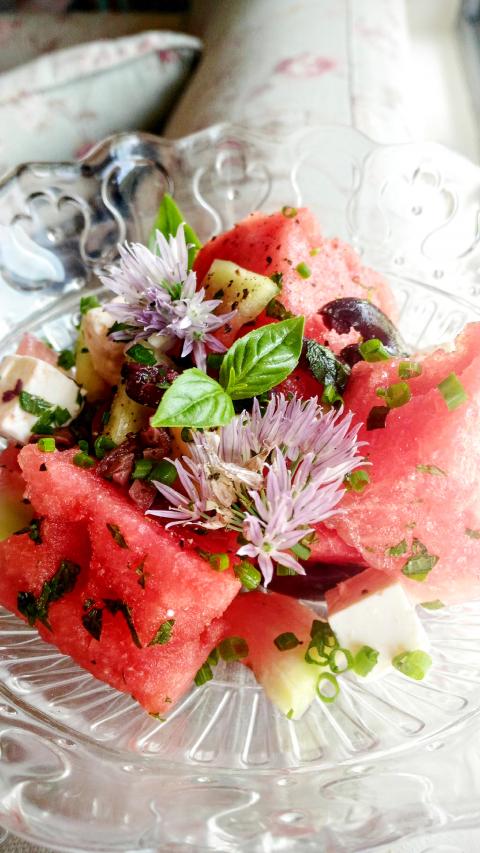
Photo: Ian Bartholomew
BOOZE IT UP
This drink has since become a summer favorite, an ideal way of processing excess watermelon. A little sugar can be added if the natural sweetness is insufficient, and a further addition of lemon juice or lime juice turns it into an agua fresca, a fruit drink popular in Latin America and the Caribbean.
If you are looking to get even more relaxed, the addition of sparkling wine, lemonade, vodka, rum, mint leaves and perhaps a dash of sugar syrup can develop into anything from a light, zingy summer buzz to a full-blown lost weekend (not to be recommended no matter how good it tastes).
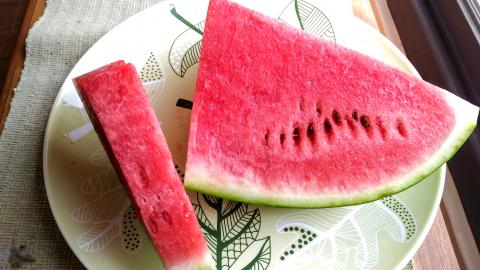
Photo: Ian Bartholomew
Tarting up watermelon with various ingredients is all very well and is often necessary for fruit that is not at its best. Watermelon can be dry and fibrous, or simply lacking flavor and a little bit of a pick-me-up does no harm, but for fruit at the peak of its condition, it should really only be enjoyed neat, like a single malt scotch.
At the moment, Hualien is reveling in watermelon heaven, with melons grown in Fenglin Township having been praised by the newly inaugurated president Tsai Ying-wen (蔡英文) during a melon festival late last month.
These melons where also used in the inauguration banquet. So there is unsurprisingly much talk of presidential melons around Hualien at the moment, and while a 10kg melon of the ordinary sort can exchange hands for no more than NT$200, a melon with the right sort of imprimatur will sell for many times that price.
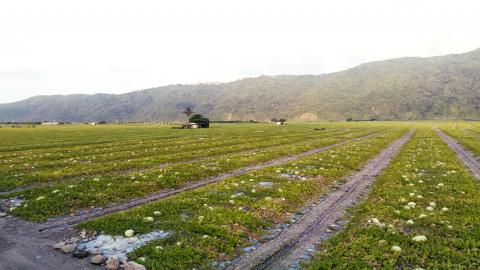
Photo: Ian Bartholomew
And presidents aside, last year was the first time I tasted the so called “first fruits” (頭瓜), much lauded by the watermelon cognoscenti, and exchanged as gifts or sold at high prices among those in the know. Much as I would like to poo-poo any brouhaha about any exotic food that gets this kind of adulatory treatment, it was, in truth, a revelation.
The moral of this tale is that not all watermelons are created equal and it pays to choose your melon with discrimination.
TIPS ON CHOOSING THE FRUIT
When picking a whole watermelon, you should first look for fruit with a good even shape, whether round or elliptical. The skin should be slightly dull in color, not shiny, as this can indicate that the fruit is not ripe. The melon should have a light patch, called the field spot on its skin (this is the place the melon rested on the ground as it grew), and this should be a dark creamy color. If the patch is very pale, this could indicate that the melon was picked early and has not been fully ripened on the vine. You should also pick up the fruit, feeling its weight, and choosing a melon that is heavy for its size. A firm thwack on the skin of the melon should bring forth a resounding, crisp drumbeat. A dull thud is generally not a good sign.
Apart from helping to quench your thirst, watermelons are rich in vitamins and minerals. Particularly interesting in the long list of health benefits is the presence of citrulline, which helps improve blood flow, benefiting everything from cardiovascular health to libido. Indeed there have been many reports, suggesting that watermelon can have the same effect as Viagra.
It should also be noted that while many of use dive straight into the juiciest flesh at the center of the watermelon, studies have shown that concentration of nutrients is higher in the periphery, with the melon rind, which is usually discarded, having the highest concentration of all.
Indeed, watermelon rinds are an excellent food in their own right. They can be used as a vegetable in stir-fries and stews, serve as a substitute for cucumber in a dish like gazpacho, or turned into pickle or chutney. The seeds too are packed with nutrients, but to get the most out of them they need to be sprouted and shelled, which rather limits their appeal as a DIY item.
For all its great benefits, watermelon should not be eaten in excess, and should probably be avoided by pregnant women, diabetics or those with gastrointestinal conditions, for while watermelon is generally good for digestion it is liable to aggravate a dodgy tummy.
But all told, the watermelon is a powerhouse of nutrition, and almost all of the fruit can be utilized. Take advantage while it is at its best.
Watermelon salad with pickled watermelon skin
Recipe (serves 4)
The soft, melting flesh of the watermelon and the crisp sharp crunch of the pickled rinds make an excellent contrast and provides a way of using at least some of the shell from a large wedge of watermelon. While a spritz of lemon or lime is really all you need to give a new dimension to watermelon, the vibrancy of the herbs and chili, along with cheese and olives, really take it to a whole other level. Perfect for lazy summer afternoon picnics or a beachside snack.
Ingredients
A large wedge of watermelon, about 2kg
50ml plum or other fruit vinegar
1 tbsp icing sugar
1/2 tsp salt
1/2 tsp pepper
1 tsp chili flakes
100g feta cheese
50g black olives
Juice of 1-2 green lemons
Small bunch chives
Small bunch mint
Some basil leaves
Directions
1. With a stiff-bladed knife, cut the watermelon into wedges. Cut away the thick rind and set aside three or four pieces. Dice the flesh and remove as many seeds as you can. Cover and chill in the refrigerator.
2. Take the rind and using the same stiff knife, cut away the green outer peel of the watermelon and discard. Retain the white part of the rind.
3. Slice the rind into thin slices and pickle in vinegar, salt, sugar and chili flakes for at least an hour. You can taste to check that the flavor of the pickle has permeated the rind and that it has a nice firm crunch.
4. De-seed the olives and cut into slivers. Finely chop the chives and mint, and tear any of the larger basil leaves.
5. When the rind is pickled to your satisfaction remove the diced watermelon flesh and place in a large bowl. Gently mix in the pickled rind and olives. Crumble in the feta. Spritz the dish with lemon or lime juice and sprinkle with chives, mint and basil leaves.
Warning: Excessive consumption of alcohol can damage your health.
Ian Bartholomew runs Ian’s Table, a small guesthouse in Hualien. He has lived in Taiwan for many years writing about the food scene and has decided that until you look at farming, you know nothing about the food you eat. He can be contacted at Hualien202@gmail.com.
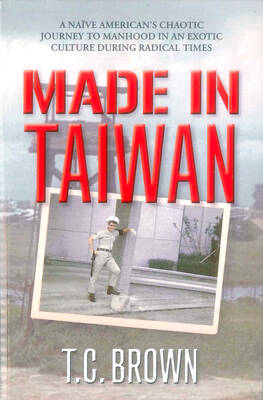
By 1971, heroin and opium use among US troops fighting in Vietnam had reached epidemic proportions, with 42 percent of American servicemen saying they’d tried opioids at least once and around 20 percent claiming some level of addiction, according to the US Department of Defense. Though heroin use by US troops has been little discussed in the context of Taiwan, these and other drugs — produced in part by rogue Chinese Nationalist Party (KMT) armies then in Thailand and Myanmar — also spread to US military bases on the island, where soldiers were often stoned or high. American military policeman
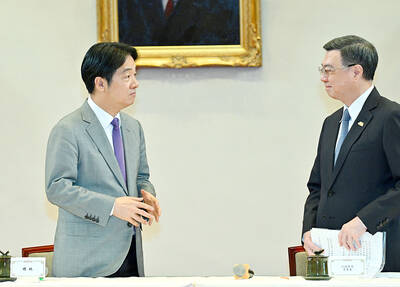
Under pressure, President William Lai (賴清德) has enacted his first cabinet reshuffle. Whether it will be enough to staunch the bleeding remains to be seen. Cabinet members in the Executive Yuan almost always end up as sacrificial lambs, especially those appointed early in a president’s term. When presidents are under pressure, the cabinet is reshuffled. This is not unique to any party or president; this is the custom. This is the case in many democracies, especially parliamentary ones. In Taiwan, constitutionally the president presides over the heads of the five branches of government, each of which is confusingly translated as “president”

An attempt to promote friendship between Japan and countries in Africa has transformed into a xenophobic row about migration after inaccurate media reports suggested the scheme would lead to a “flood of immigrants.” The controversy erupted after the Japan International Cooperation Agency, or JICA, said this month it had designated four Japanese cities as “Africa hometowns” for partner countries in Africa: Mozambique, Nigeria, Ghana and Tanzania. The program, announced at the end of an international conference on African development in Yokohama, will involve personnel exchanges and events to foster closer ties between the four regional Japanese cities — Imabari, Kisarazu, Sanjo and
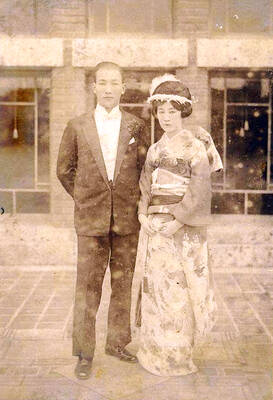
Sept. 1 to Sept. 7 In 1899, Kozaburo Hirai became the first documented Japanese to wed a Taiwanese under colonial rule. The soldier was partly motivated by the government’s policy of assimilating the Taiwanese population through intermarriage. While his friends and family disapproved and even mocked him, the marriage endured. By 1930, when his story appeared in Tales of Virtuous Deeds in Taiwan, Hirai had settled in his wife’s rural Changhua hometown, farming the land and integrating into local society. Similarly, Aiko Fujii, who married into the prominent Wufeng Lin Family (霧峰林家) in 1927, quickly learned Hoklo (commonly known as Taiwanese) and